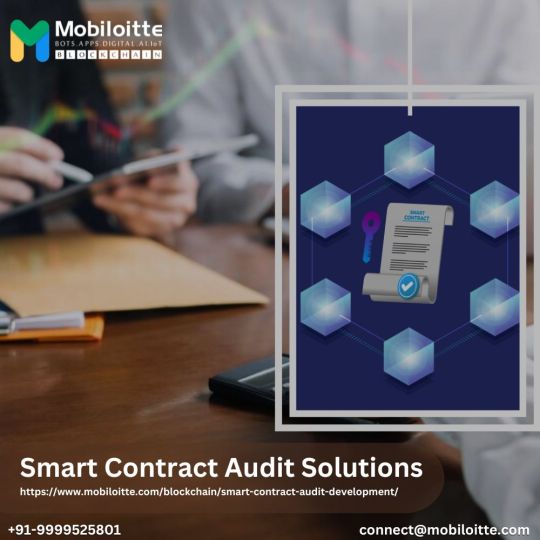#Risk Assessment Services
Explore tagged Tumblr posts
Text
The Financial Benefits of Investing in Risk Assessment Services
In today's complex and fast-paced business environment, risk is an ever-present factor that can threaten the operational and financial stability of any organization. In this video, we will explore the many ways in which risk assessment services provide a strong return on investment and contribute to the long-term financial health of a business.
1 note
·
View note
Text
Optimization Customer Risk Assessment with Effective KYC Solutions
Effective Customer Risk Assessment is crucial for safeguarding your business. Integrating a robust KYC Solution streamlines this process by verifying customer identities and assessing potential risks. By leveraging these solutions, you enhance your risk management strategy, ensuring compliance and protecting your business from potential threat
#KYC Risk Management#Customer Risk Assessment#Risk Assessment Services#Risk Assessment Process#Risk Management Tools
0 notes
Text
Understanding the Importance of Enterprise Risk Management in Modern Business
In today's dynamic business landscape, enterprises face a multitude of risks that can impact their operations, finances, and reputation. From cybersecurity threats to supply chain disruptions and regulatory compliance issues, the complexities of modern business require a proactive approach to risk management. This is where Enterprise Risk Management (ERM) plays a crucial role. By implementing a robust ERM strategy, businesses can identify, assess, and mitigate risks effectively, safeguarding their long-term success.
Enterprise Risk Management Strategy involves a systematic approach to identifying, assessing, and managing risks across an entire organization. It goes beyond traditional risk management practices by integrating risk considerations into strategic planning and decision-making processes. A comprehensive ERM framework enables businesses to anticipate potential threats and opportunities, allowing them to adapt and thrive in an ever-changing environment.
One of the key components of an effective ERM strategy is the establishment of a risk-aware culture within the organization. This involves fostering a mindset where every employee understands their role in identifying and managing risks relevant to their areas of responsibility. By promoting transparency and accountability, businesses can create an environment where risks are openly discussed and addressed in a timely manner.
Business Risk Management is another crucial aspect of ERM, focusing on the identification and mitigation of risks specific to the organization's operations and industry. This may include risks related to market fluctuations, competitive pressures, operational disruptions, and compliance requirements. By conducting thorough risk assessments and implementing appropriate control measures, businesses can minimize the likelihood and impact of adverse events.
Furthermore, an effective ERM strategy enables businesses to capitalize on opportunities while managing risks. By taking a balanced approach to risk-taking, organizations can pursue growth initiatives with confidence, knowing that they have mechanisms in place to mitigate potential downsides. This proactive mindset is essential for staying ahead of the competition and seizing new market opportunities.
In today's interconnected world, businesses are also faced with a growing array of external risks, including geopolitical uncertainties, natural disasters, and pandemics. These global risks can have far-reaching implications for organizations of all sizes and industries. A robust ERM strategy helps businesses anticipate and adapt to these external factors, ensuring resilience and continuity in the face of adversity.
Moreover, effective Enterprise Risk Management can have tangible benefits for businesses, including improved decision-making, enhanced stakeholder confidence, and better allocation of resources. By understanding the interconnectedness of risks across the organization, businesses can optimize their risk-reward trade-offs and drive sustainable growth.
In conclusion, Enterprise Risk Management is essential for navigating the complexities of modern business. By adopting a proactive and holistic approach to risk management, organizations can identify opportunities, mitigate threats, and safeguard their long-term success. Business Risk Management is a critical component of ERM, focusing on the specific risks faced by the organization. By integrating risk considerations into strategic planning and decision-making processes, businesses can adapt and thrive in an ever-changing environment.
1 note
·
View note
Text




Helena: (whispering in myka's ear) You just say the word, my love.
Myka: (whispering back) Is this your idea of sweet talk?
Helena: (still whispering) I'm certainly excited about the prospect of avenging Leena's unjust murder.
Myka: (sighing) Just... play nice.
Helena: Nice was Leena's job. Abigail's taken it on just fine. Let's hope Artie doesn't murder her, too.
Myka: The Regents agreed, it wasn't him. They agreed that he wasn't himself. They've accepted that.
Helena: And I'm not a Regent. Nor are you. He wasn't himself? He wasn't anybody else either. Leena died by his hand for whatever decisions he made leading to the moment he... did what he did. How can you just..
Myka: (glaring)
Helena: (takes in a deep breath)
Myka: This is the warehouse, Helena. Artifacts do things to people. They play with your mind. We all know that risk. We all take it, every single day. It could have been any one of us. It could be. It has been.
Helena: If he had hurt you...
Myka: I know.
Helena: If he ever does.
Myka: I know.
Silence.
Myka: But I think, for now, we have reached our warehouse homicides quota. Right?
Helena: It doesn't have to be in the warehouse.
Myka: Helena.
Helena: Fine. I won't murder him.
Myka: That's all I'm asking.
Helena: For now.
Myka: I... okay, sure. I'll accept that.

#bering and wells#dickens draws#endless wonder wives#everyday i'm bwodlin'#i was spilling over my stress limit yesterday with back and forths about my car#the collision place quoted sixty seven thousand dollars for a battery replacement but when i talked to the mechanic guy he said#that is just the cost of the work - he doesn't even think it needs to be done#when i talked to the dealership the service manager claims they cannot assess the risk of damage inside of the battery#when i talk to the insurance adjuster he says the collision place said the dealership said there is no battery damage but could maybe be#if there's another big hit to the undercarriage#lolll losing my mind#anyway insurance says if i want they will just pay me for whatever i think the damage is worth he literally said give me a number#and i was like my warranty my gas it's a minimum of 5K bro#he said let me talk to my manager#giiiiiirl#talk faster because i want my car back#all that to say i gave all of my stress and anxiety to myka because i know she can handle it#and even if she can't she has helena there to kiss her mental booboos away#AND EXACT REVENGE ON ARTIE FOR KILLING LEENA#the end#after i posted this i went into photoshop and learned how to do a four image split from a singular image so basically i leveled up#woo
38 notes
·
View notes
Text
Having a 9am class and an 8 hour shift the same day I have an assignment due so I haven't slept, is a recipe for disaster. Fingers crossed I don't bodily attack a customer 🤞
#ace is a mess#Uni shenanigans#work tag#told my boss i was available 1-9 as thats the usual weekday shift he gives me he approved it then scheduled me for 12 🤨#hes lucky my ciass finished on time cus i wanna throttle him hes taking the pss lately#im running on 3 hours sleep cus i had to try get this assignment finished before i went to sleep cus i have class and work today#its due at 4pm and i was not gonna risk tryna get it done on my break when he never sends us for breaks anyway#im so sleep deprived lately i cant wait for assessment season to be over so i can stop making stupid decisions about my sleep habits#when my stress imduced insomnia is already kicking my ass as it does every season and yet i never learn#i love working in customer service with useless managers when im feeling homicidal#hopefully i manage to get through the shift without completely losing it praying i wont yell is already a losing battle#customers are always at the most stupid when you dont have the patience for it though
8 notes
·
View notes
Text
Some days I think I probably do need an actually trained service animal for mental health crap + the occasional chronic crap affecting my mobility.
But like…I don’t really want a dog. I want a Highly Trained mainecoon or norwegian forest cat. Just. This very large very fluffy very baseline breed intelligent cat known to take on BEARS (or, home invaders and men attempting SA).
I’d be THAT Crazy Lady walking this giant fluff monster most days, but other days just have my lap full of fluff when my hips-down don’t want to cooperate, or I need the comforting weight and fluffy company to hold the brain static at bay.
And some days…look. It hurts to grasp things. Or I risk dropping things. And cats can and will open cupboards and drawers if the handles let them hook their paws Just So to make up for the lack of opposable thumbs.
(Yeah yeah I know people are more accustomed to training dogs for this, but I’ve had quite a bit of luck training my “just housecats” as adults with various things, and people post the adventures they take with their mainecoons like, all the time…so think of what I could do with socializing and training a cat if I had the chance to do so.
(…also I just get along better with cats than dogs. They’re more tolerant to my need to not have a true routine. Also they poop in a box.)
#tiger’s musings#yesterday was…ugh. think my body was fighting off a minor respiratory illness#bUT because I’m also chronically ill + have to take an immunosuppresent it…was not good#like I kinda freaked my online friends out with what my symptoms were#but…I’m just. so used to this. so used to just holding onto walls because I get so unsteady and trying to sleep through these episodes#it’s…definitely Something. not ‘jUST psYCHoSOmATiC’ like I got gaslit into believing 5+ years ago#but…with what turned out to be AS and Probably a CTD and Currently Assumed IBS (but prolly also CTD imo)#I…hadn’t really had a chance to do more than ‘okay so I also have tremors’#but hey. I have to have my annual pcp visit so I’ll make myself whine about it and the fluttery/tight/visible chest&pulse issues then#(they’re probably related. POTS…kinda can cause high bp/tachicardia and sometimes tremors too.)#(and like. high bp is kinda something so common in my family in young adulthood it’s a ‘when’ vs ‘if’)#so…yeah. sometimes I think I might need some sort of chair and service animal#in addition to custom fitted compression globes#and probably compression shorts and spats and sleeves on my knees and elbows#aaaaand prolly custom arch supports. in addition to Nicer Shoes than an Okay $50 newbalance pair#which…yeah. you can see how all this would get Very Expensive Very Fast#(aaaaaaaand… hope I don’t idk. get dropped from my medicaid? listen they’re sending me automated messages to get my risk assessment done)#(and I’ve got so much going on that I would be Screwed even if I hadn’t aged out of my dad’s insurance)#(it definitely affects me being able to work and keep a job)
3 notes
·
View notes
Text
Common Pitfalls in Industrial Estimating Service and How to Avoid Them
Industrial estimating service is a crucial aspect of project planning, helping businesses determine accurate costs for materials, labor, equipment, and unforeseen expenses. However, even experienced estimators can make costly mistakes that lead to budget overruns, project delays, and financial losses. Understanding these pitfalls and how to avoid them can significantly improve the accuracy and reliability of cost estimates.
1. Inaccurate or Incomplete Project Data
One of the most common pitfalls in industrial estimating is relying on incomplete or outdated project data. Without accurate information on material costs, labor rates, and project specifications, estimators may produce unreliable cost estimates.
How to Avoid It:
Gather detailed project requirements, including material specifications, site conditions, and workforce needs.
Use up-to-date cost databases and historical project data to ensure accuracy.
Collaborate closely with engineers, contractors, and suppliers to obtain precise information.
2. Underestimating Material Costs
Material prices fluctuate due to market conditions, inflation, and supply chain disruptions. Underestimating these costs can lead to budget shortfalls and procurement issues.
How to Avoid It:
Monitor market trends and material price changes regularly.
Include a contingency budget to account for unexpected price increases.
Work with reliable suppliers to secure competitive pricing and reduce cost variations.
3. Overlooking Labor Productivity Rates
Failing to account for labor productivity variations can result in inaccurate labor cost estimates. Factors such as worker skill levels, site conditions, and project complexity affect productivity.
How to Avoid It:
Use industry benchmarks and historical data to estimate labor productivity accurately.
Adjust labor estimates based on the complexity and location of the project.
Consider potential delays caused by weather conditions, union regulations, and workforce availability.
4. Ignoring Project-Specific Risks
Every industrial project has unique risks, including regulatory compliance, environmental factors, and equipment failures. Ignoring these risks can lead to unexpected expenses.
How to Avoid It:
Conduct a thorough risk assessment before finalizing estimates.
Include contingency funds for unforeseen challenges.
Stay informed about industry regulations and environmental requirements.
5. Inconsistent Use of Estimating Software
Many companies rely on estimating software, but inconsistent or incorrect usage can lead to errors. Misinputted data or outdated software can affect cost projections.
How to Avoid It:
Ensure estimators are trained in using the latest estimating software.
Regularly update cost databases and software settings.
Cross-check manual calculations with software-generated estimates for accuracy.
6. Failure to Factor in Inflation and Supply Chain Disruptions
Inflation and supply chain issues can significantly impact industrial project costs. Overlooking these factors may result in underestimated budgets.
How to Avoid It:
Include an inflation adjustment factor in long-term projects.
Diversify supply chain options to mitigate material shortages.
Monitor global economic trends to anticipate cost fluctuations.
7. Not Revisiting and Updating Estimates
Cost estimates should not be treated as fixed numbers. Failing to revise estimates as the project progresses can lead to discrepancies between budgeted and actual costs.
How to Avoid It:
Conduct regular cost reviews throughout the project lifecycle.
Adjust estimates based on real-time project updates.
Maintain clear communication between project managers, estimators, and financial teams.
8. Overlooking Hidden Costs
Hidden costs, such as equipment maintenance, transportation, and compliance fees, can add up over time. Ignoring these expenses can cause financial strain.
How to Avoid It:
Break down estimates into detailed cost components, including indirect expenses.
Identify all potential cost factors, including permits, inspections, and logistics.
Account for additional site preparation or unforeseen environmental adjustments.
9. Lack of Collaboration Between Teams
Poor communication between estimators, engineers, contractors, and suppliers can lead to misunderstandings and inaccurate estimates.
How to Avoid It:
Foster collaboration between all project stakeholders.
Organize regular meetings to align expectations and verify data accuracy.
Encourage transparency in cost estimation processes.
10. Unrealistic Schedule Assumptions
Underestimating project timelines can result in rushed work, increased labor costs, and missed deadlines. Delays can further inflate costs due to extended equipment rentals and idle labor.
How to Avoid It:
Develop realistic timelines based on past project experiences.
Account for potential weather disruptions, permitting delays, and supply chain issues.
Plan schedules with buffer time to absorb unforeseen delays.
Conclusion
Industrial estimating service is a fundamental part of project planning, but common pitfalls can undermine its effectiveness. By ensuring accurate data collection, monitoring market trends, integrating risk management strategies, and improving collaboration, businesses can enhance the reliability of their cost estimates. Avoiding these pitfalls will lead to better financial control, improved project efficiency, and reduced risk of budget overruns.
#Industrial estimating service#industrial cost estimation#industrial project budgeting#industrial construction estimating#industrial cost forecasting#industrial estimating software#industrial estimating consultant#industrial infrastructure estimating#industrial project cost analysis#industrial material cost estimation#industrial labor cost analysis#industrial risk assessment#industrial estimating accuracy#industrial project feasibility study#industrial project scheduling#industrial cost control#industrial estimating best practices#industrial construction cost planning#industrial estimating service provider#industrial supply chain cost estimation#industrial energy sector estimating#industrial cost estimation challenges#industrial estimating technology#industrial cost optimization#industrial project financial planning#industrial contingency planning#industrial equipment cost analysis#industrial estimating trends#industrial estimating in manufacturing#industrial construction bid estimating
0 notes
Text
SME OH offers occupational health assessments, employee health screening, workplace mental health support, and fitness for work evaluations services in the UK.
#Occupational health assessment#Employee health screening#Workplace mental health support#Fitness for work evaluation#Employee assistance programs#Occupational health services#Workplace wellness programs#Employee well-being initiatives#Health risk assessments#Corporate health solutions
0 notes
Text
Expert Technology Advisory & Business Consulting Services | Nexdigm

Optimize your business with expert technology advisory services. From risk assessment to strategic business technology consulting, we help drive innovation and efficiency. Explore our tailored solutions today!
0 notes
Text
What is Government Relationship Management (GRM)?
Government Relationship Management (GRM) is a specialised field within government relations that includes strategic planning, implementation, and management of the organisation’s interaction with government entities.
Visit More Website: https://www.codexcomms.com.au/
#Government Relations#Public Relations Agency#Public Relations Agency in Australia#Brand Reputation Enhancement Strategies#Communication Risk Assessment Services#Strategic Messaging Development for Businesses
0 notes
Text

Find the best portfolio management services in India with expert insights on investment strategies, risk management, and financial growth. Make informed decisions to maximize returns and secure your wealth.
#best portfolio service#wealth planning#investment tips#asset management#mutual funds#stock advisory#financial growth#investment firms#risk assessment#market analysis#fund managers#investment strategy#capital growth#passive income#diversified portfolio#SEBI registered#financial security#smart investing#ROI optimization#investment experts
0 notes
Text
Enhancing Security with Expert Risk Assessment and Strategic Planning
In today’s rapidly evolving security landscape, businesses and organizations must proactively address potential threats to ensure the safety of their assets, personnel, and critical information. Security consulting plays a vital role in helping organizations navigate these challenges by providing expert guidance in risk assessment and mitigation strategies.
The Role of Security Risk Assessment Consultants
Security risk assessment consultants specialize in evaluating an organization's security needs, identifying vulnerabilities, and developing customized risk management strategies. DSP Consultants, a leading provider of security consultancy services in Dubai, United Arab Emirates, offers a structured approach to security planning by leveraging industry expertise and cutting-edge methodologies.

A thorough security risk assessment involves analyzing physical security measures, potential threat landscapes, and compliance requirements. By conducting detailed evaluations, security consultants help businesses minimize risks, enhance resilience, and ensure regulatory adherence.
Comprehensive Security Master Plan for Optimal Protection
A security master plan serves as a blueprint for organizations to integrate security into their operations effectively. It outlines key security measures, policies, and technological implementations required to safeguard an organization’s infrastructure.
DSP Consultants develop comprehensive security master plans tailored to each client’s unique operational requirements. By considering factors such as facility layout, access control, surveillance, and emergency response protocols, the firm ensures a well-rounded security strategy that aligns with both business objectives and local regulations.
Strategic Security Risk Assessment Planning
Effective security risk assessment planning is crucial for organizations looking to enhance their security framework. DSP Consultants employ a systematic approach that includes:
Identifying potential threats and vulnerabilities.
Assessing the impact of security risks on business continuity.
Recommending mitigation strategies to strengthen security measures.
Implementing crisis management plans and compliance frameworks.
Through structured security risk assessment planning, businesses in Dubai can proactively manage risks and fortify their defenses against security breaches.
Why Choose DSP Consultants for Security Consultancy Services?
As a trusted name in security consulting, DSP Consultants brings extensive experience in security risk assessment, security master planning, and comprehensive security solutions. Their team of experts collaborates closely with clients to design and implement security strategies that ensure long-term protection.
By choosing DSP Consultants, businesses in Dubai gain access to expert insights, cutting-edge security design services, and a proactive approach to risk management. Secure your organization’s future with specialized security consultancy services tailored to your unique needs. For more information please contact us at [email protected].
#Security risk assessment consultants#Security risk consultancy#Secuirty risk assessment conusltants Dubai#Security master planning#Security master plan#Security consultancy services Dubai
0 notes
Text
#AI Factory#AI Cost Optimize#Responsible AI#AI Security#AI in Security#AI Integration Services#AI Proof of Concept#AI Pilot Deployment#AI Production Solutions#AI Innovation Services#AI Implementation Strategy#AI Workflow Automation#AI Operational Efficiency#AI Business Growth Solutions#AI Compliance Services#AI Governance Tools#Ethical AI Implementation#AI Risk Management#AI Regulatory Compliance#AI Model Security#AI Data Privacy#AI Threat Detection#AI Vulnerability Assessment#AI proof of concept tools#End-to-end AI use case platform#AI solution architecture platform#AI POC for medical imaging#AI POC for demand forecasting#Generative AI in product design#AI in construction safety monitoring
0 notes
Text
Key Factors That Influence the Accuracy of a Cost Estimating Service
Accurate cost estimation is essential for the successful completion of any construction project, as it provides a clear financial framework that guides decision-making. However, achieving accuracy in cost estimation is no easy task. A variety of factors come into play that can influence the precision of a cost estimate. These factors can range from market conditions to the experience of the estimator and even the tools used in the estimation process. In this article, we will explore the key factors that influence the accuracy of a cost estimating service and how these elements contribute to reliable project financials.
1. Quality of Data Used
The foundation of an accurate cost estimate is the quality of the data on which it is based. For cost estimating services to produce reliable estimates, they must use up-to-date, accurate, and comprehensive data. This includes material costs, labor rates, equipment costs, and historical data from similar projects. Outdated or incomplete data can lead to inaccurate estimates, potentially causing cost overruns or missed profit opportunities.
Estimators often rely on databases that contain industry-standard pricing information. However, prices for materials and labor can fluctuate due to market conditions, supply chain disruptions, or inflation. By using the most current data, cost estimating services can ensure that their estimates reflect the true cost of the project, minimizing the risk of budget discrepancies.
2. Estimator Experience and Expertise
The experience and expertise of the cost estimator play a significant role in the accuracy of the estimate. An estimator with years of hands-on experience in the industry will have a deeper understanding of the complexities involved in a project. This knowledge allows them to better assess risks, anticipate potential challenges, and select the most cost-effective materials and labor sources.
An experienced estimator will also be able to apply their expertise to recognize patterns from previous projects, avoiding common pitfalls and ensuring that the estimate is comprehensive. In contrast, a less experienced estimator might overlook critical factors, leading to underestimates or overestimates that can affect the project's budget.
3. Scope of Work and Project Complexity
The complexity and scope of a project have a significant impact on the accuracy of a cost estimate. A large, multifaceted project with many moving parts will be more difficult to estimate accurately than a smaller, simpler project. Projects that involve multiple contractors, subcontractors, and suppliers will require detailed coordination, and failing to account for all variables can result in an inaccurate estimate.
Cost estimating services must ensure that every aspect of the project is considered when generating an estimate. For example, the cost of permits, inspections, and site preparation work must all be factored into the overall budget. Inaccurate scope definition can lead to significant discrepancies in the final cost estimate.
4. Use of Technology and Estimating Software
The use of technology and advanced estimating software can significantly improve the accuracy of cost estimates. Estimating software such as Procore, Buildertrend, or CostX allows for more precise measurements, better data management, and improved collaboration between project stakeholders. These tools often have built-in databases with current material prices and labor costs, which reduces the chances of errors caused by outdated or incomplete data.
Additionally, modern estimating software often includes features like real-time updates, integration with other project management tools, and digital takeoff capabilities. These features streamline the estimating process and help estimators generate more accurate estimates more quickly, improving overall project efficiency.
5. Location and Geographic Considerations
The location of a project is another critical factor that can influence the accuracy of a cost estimate. Construction costs can vary significantly based on geographic factors, including local labor rates, material availability, and transportation costs. For example, building a project in a remote area with limited access to resources may result in higher material and labor costs, as additional logistics may be required to transport goods and workers to the site.
A cost estimating service must consider regional price differences when creating an estimate. Failing to account for location-based cost variations can result in an underestimation of project costs, leading to potential budget issues down the road.
6. Market Conditions and Economic Factors
Economic factors and market conditions also play a key role in influencing the accuracy of cost estimates. Fluctuations in the prices of raw materials, labor, fuel, and equipment can all impact the overall cost of a project. For instance, a sudden rise in the cost of steel or concrete due to supply shortages or increased demand can make a significant difference in a project’s total cost.
Cost estimating services must stay informed about market conditions, including global supply chain issues, trade tariffs, and inflation. This awareness allows them to adjust their estimates accordingly and provide a more accurate prediction of future project costs.
7. Level of Detail in the Estimate
The level of detail included in a cost estimate is a key determinant of its accuracy. A high-level estimate, which only includes broad cost categories, may not provide the level of detail required to capture all potential costs. For example, an estimate that does not break down labor costs by trade or fails to include specific materials may result in significant inaccuracies.
On the other hand, a detailed estimate that accounts for every item required for the project will provide a more accurate picture of the total cost. This includes breaking down costs into smaller categories, such as material quantities, labor rates, equipment usage, and overhead costs. Detailed estimates allow project managers to track expenses more closely and identify areas where cost savings can be made.
8. Timeframe and Project Schedule
The timeframe for completing a project is another critical factor in estimating its costs. Construction projects that are scheduled to be completed in a shorter period may require additional labor or overtime, leading to higher costs. Conversely, projects with longer timelines may result in increased costs due to inflation, changes in labor rates, or the need for extended equipment rentals.
Estimating services must consider the project schedule when providing cost estimates. A well-defined schedule allows estimators to account for potential cost fluctuations based on the time required to complete the project. Inaccurate scheduling estimates can result in underestimating labor and equipment costs, impacting the project’s overall budget.
9. Risk Assessment and Contingency Planning
Risk assessment and contingency planning are essential components of accurate cost estimation. Every project involves a degree of risk, whether related to weather delays, unforeseen site conditions, or changes in regulations. A good cost estimating service will assess potential risks and build contingency allowances into the budget to cover these uncertainties.
By factoring in potential risks and creating a financial buffer, estimators can ensure that projects are prepared for unforeseen challenges without exceeding the budget. Failing to account for risk can lead to cost overruns if unexpected issues arise during the project’s execution.
Conclusion
The accuracy of a cost estimate is influenced by a variety of factors, ranging from the quality of data used to the experience of the estimator and the complexity of the project. By considering factors such as the scope of work, location, market conditions, and technology, cost estimating services can provide more reliable and realistic estimates. With a thorough understanding of these key factors, cost estimators can help ensure that construction projects stay within budget, minimizing the risk of cost overruns and contributing to the overall success and profitability of the project.
#Cost Estimating Service#factors affecting cost estimation#accuracy of cost estimates#project estimating services#cost estimation in construction#impact of location on cost estimates#estimating software tools#market conditions and cost estimation#role of estimator experience in accuracy#contingency planning in cost estimating#construction cost estimation factors#estimating construction costs#risk assessment in estimating#quality of data in cost estimating#project scope and cost estimates#project complexity and estimating#construction estimate accuracy#improving cost estimation accuracy
0 notes
Text

Smart Contract Audit and Development by Mobiloitte
#Smart Contract Audit Development#Smart Contract Security Audit#Blockchain Audit Services#Contract Audit Solutions#Smart Contract Testing#Blockchain Security Audit#Contract Integrity Checks#DeFi Audit Services#Smart Contract Verification#Blockchain Contract Analysis#Contract Risk Assessment#Smart Contract Compliance#Expert Contract Audits#Secure Blockchain Contracts#Contract Vulnerability Testing#Mobiloitte Smart Contract Audit
0 notes